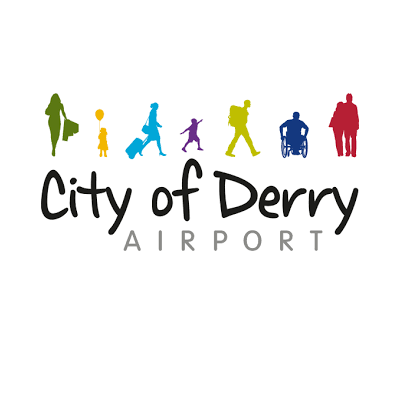Holiday season deals are a great way to create visibility for your airport brand. Thanks to travel companies embracing the festive spirit and offering their own Black Friday and Cyber Monday deals, many customers are already thinking ahead to Christmas, and even to their 2020 summer family vacation.
And it’s a great time to be in Travel. Over the past decade changing attitudes to lifestyle have resulted in a marked increase in spending on experiences rather than possessions, particularly among millenials, who are increasingly likely to ask family for contributions towards flight costs rather than Christmas presents.
But offers, promotions and wanderlust are just part of the story. Without a frictionless path to purchase, your airport will miss out on potential customers. A study from Allianz shows that more than a third of Americans surveyed (36%) haven’t taken a vacation for two years. Is that because holidays are no longer seen as important, or could it be because travel companies have lost sight of who their customers are and what they need? As the desire for personalisation intensifies, consumers are spending much more time on research before arriving at the consideration stage, and when they do start along the booking journey, they have many questions that need to be addressed.
Another consideration is the fact that people constantly switch from one device to another. According to Google, 90% of multiple device owners switch between, on average, three devices per day to complete a task. People are more connected and more in control of the buying process than ever before.
This is why an omnichannel approach is crucial for airports that want to guide customers smoothly through the booking process.
What is omnichannel marketing?
Omnichannel marketing is the concept and execution of providing a seamless user experience across every channel relevant to the buyer’s journey. It embraces every customer touchpoint, requiring consistency when the user is device-hopping, and a cohesive brand customer interface between digital, print media, word-of mouth and bricks-and-mortar. It emphasises a sea change in the way the customer moves through the marketing funnel, and even a complete reimagining of what the marketing funnel is.
What used to be a simple one or two-stage process is now a journey that spans different locations, 24-hours a day, multiple channels and a complete customer lifecycle.
According to a study from IDC, users who shop across channels have a 30% higher lifetime value than those who do not.
Customers enjoying an omnichannel experience also spent an average of 4% more on each shopping occasion in-store, 10% more online and 13% more when doing prior research before buying.
5 steps to your omnichannel Christmas campaign
As you plan your Christmas campaign, here are five steps your airport can take to ensure the emphasis of your strategy is on omnichannel:
1. Create good quality, relevant content
As customers connect across an array of devices and in many situations, the best way to get your message across is to offer information that people value. Whilst relevance has always been at the heart of good marketing, being relevant ‘in the moment’ is now much more important.
What kind of content are your customers consuming? Where and when are they reading or viewing it? Are you offering suggestions based on browsing history or location? Do you show personalised up-sell and cross-sell recommendations? Are you sending cart abandonment emails that can be viewed on whichever device they happen to be using?
2. A holistic and empathic knowledge of your customer
To create a truly valuable omnichannel experience you have to know your customers, understand who they are, what they want, even what their goals and challenges are.
Ask for customer feedback, leverage the power of lead-capture landing pages and use social listening tools to learn more about your customers. Find out which channels they use to access your content and target them via the platform where they feel most comfortable.
3. Operational agility and great inter-departmental communication
Siloed organisational structures can present obstacles to omnichannel implementation. Where sales, PR, customer service, product development and marketing operate independently of one another within a business, it is almost impossible to create a cohesive, frictionless customer experience.
When you restructure traditional roles, allowing each team to understand its place in the omnichannel picture, customer experience becomes the responsibility of all employees. Clear expectations are set and communication becomes streamlined across your organisation, allowing for agile, customer centred marketing that builds great omnichannel experiences.
4. Fully integrated, industry specific marketing tools
There are hundreds of tools available to help with marketing technology. The most used of these include:
- Customer relationship management software
- Email marketing automation tools
- Analytics and data visualisation solutions
- Content management system
But with many options available, how do you identify the right tools for your airport business?
A customer relationship management (CRM) capability is at the heart of every ‘technology stack’ (a selection of tools that is used together). This allows you to record, in detail, every buyer’s journey through from prospect to customer and beyond.
The analytics tools inform key business decisions and overall strategy. Data analytics allows your airport to use the customer data you collect in the most powerful way and gives a deep understanding of your customer’s behaviour, allowing you to predict buying behaviour and target the customer with relevant messaging. This business intelligence also enables optimisation of operational activities.
These two – the data and the understanding without which the data is meaningless – form the core of your marketing stack. Make sure you not only have both these tools, but that your software has been developed by experts like Rezcomm who know your industry inside out. This will provide you with the best opportunity to reach your customers relevantly.
5. Responsive web pages and booking forms
Mobile-friendly websites and apps are now so integrated, there is no excuse to expect customers to zoom in to see your brand’s content on a small screen. It must display well, no matter their screen size. This is especially relevant to post-click landing pages and forms where visitors need to input personal information.
Take inspiration from these 3 Brilliantly creative omnichannel campaigns
Let’s take a look at three creative omnichannel campaigns to get some ideas for your Christmas marketing…
Westjet
This is an ‘oldie-but-goodie’ example from Canadian airline Westjet’s 2013 holiday marketing.
The airline launched a huge campaign spanning the Christmas period. The idea was to grant passengers their Christmas wishes through a live digital stream to Santa before they boarded their flight.
Passengers believed this was just a fun ‘talk to Santa’ game, but during the flight, staff at the destination bought and wrapped all of the presents on the wish list. This was a heart-warming campaign to watch as it showed how happy the passengers were to be surprised at the end of their flight. They were waiting for their luggage, and everything they had asked for was waiting for them. This meant that the campaign went viral, generating a huge amount of publicity. Twitter went crazy about #westjetchristmas, and on YouTube alone there were 47.9 million views of the video.
The campaign, which is still one of the best examples of integrated marketing, won numerous awards within the Travel and Tourism sector and achieved a huge growth in brand awareness and loyalty opportunities both within and beyond North America.
British Airways
In 2018, British Airways British Airways launched a star-studded Christmas campaign, ‘A Very Kevin Christmas’, inspired by Kevin McAllister’s adventures in the iconic film Home Alone 2.
Created by agency W and filmed in New York, the advert featured four children, all of whom had overcome challenging circumstances in inspiring ways, and celebrity cameos from Millie Bobby Brown, Pixie Lott, Harry Maguire and Jodi Whitaker. Jon Culshaw recreated the famous scene when Kevin meets Donald Trump in the Plaza Hotel.
To coincide with the campaign, the airline unveiled a selection of movie-like experiences. In a three-day trip to New York, the children and their families enjoyed a stay at the iconic Plaza Hotel, ice skating in Central Park, a visit to the Rockettes show at the Radio City Music Hall, toy shopping in the newly re-opened FAO Schwarz and an ice cream feast in the Plaza Hotel’s most exclusive and prestigious guest room, The Presidential Suite.
This campaign shared a similar ‘feel-good-factor’ to Westjet’s triumph, and the storytelling worked perfectly across channels, perfectly capturing the nostalgia of Christmas. And the airline is extending this goodwill into 2019 with its BA Magic 100 campaign as part of its 100th birthday celebrations.
Club Med
Not specific to Christmas, but when it comes to omnichannel travel brands can learn a lot from all inclusive holiday provider, Club Med.
The path to purchase for a Club Med vacation is 96 days and includes an average of 11 digital and physical touchpoints. Rather than trying to speed this process, the brand adopted a long-term omnichannel strategy designed to help more customers complete the path to purchase.
This was done by integrating live chat into the website, meaning that agents could respond to questions immediately – the perfect way to nudge prospects past the consideration stage and on to purchase.
As the booking journey progresses, Club Med customers can contact the company’s representatives using social channels, the call centre or at one of the numerous physical branches. Here they can use a virtual reality headset to take a tour of the resort. Club Med excels at omnichannel because whatever the touchpoint, the customer experience is seamless.
The brand has also built an online customer community where people can share their experiences, offer advice and even vote on ideas for new resort locations or types of holiday. Potential customers are actively encouraged to chat with community members and allow existing customers to answer questions that an agent could otherwise handle. This plays on the TripAdvisor effect, and the desire for word-of-mouth reassurance, and has the effect of building trust and authenticity. The online community becomes a forum for customer feedback, a place where advocacy can be recognised and rewarded, a resource for the self-service content generation and even an effective marketing tool within an omnichannel strategy.
Consider integrating some of these techniques into your Christmas marketing and see how easy it is to connect with your customers.
Rezcomm’s world-first combined omnichannel platform for airport sales, marketing and customer-centric analytics can help you build your airport business long-term. We already partner with airports that serve a quarter of a billion passengers worldwide. If you want to develop marketing campaigns that reaches customers across channels, contact us for a chat today.






























